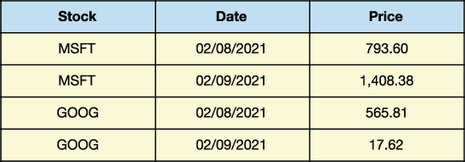chapter seven
So far on our pandas journey, we’ve explored the one-dimensional Series and the two-dimensional DataFrame. The number of dimensions is the number of reference points we need to extract a value from a data structure. We need only one label or one index position to locate a value in a Series. We need two reference points to locate a value in a DataFrame: a label/index for the rows and a label/index for the columns. Can we expand beyond two dimensions? Absolutely! Pandas supports data sets with any number of dimensions through the use of a MultiIndex.
